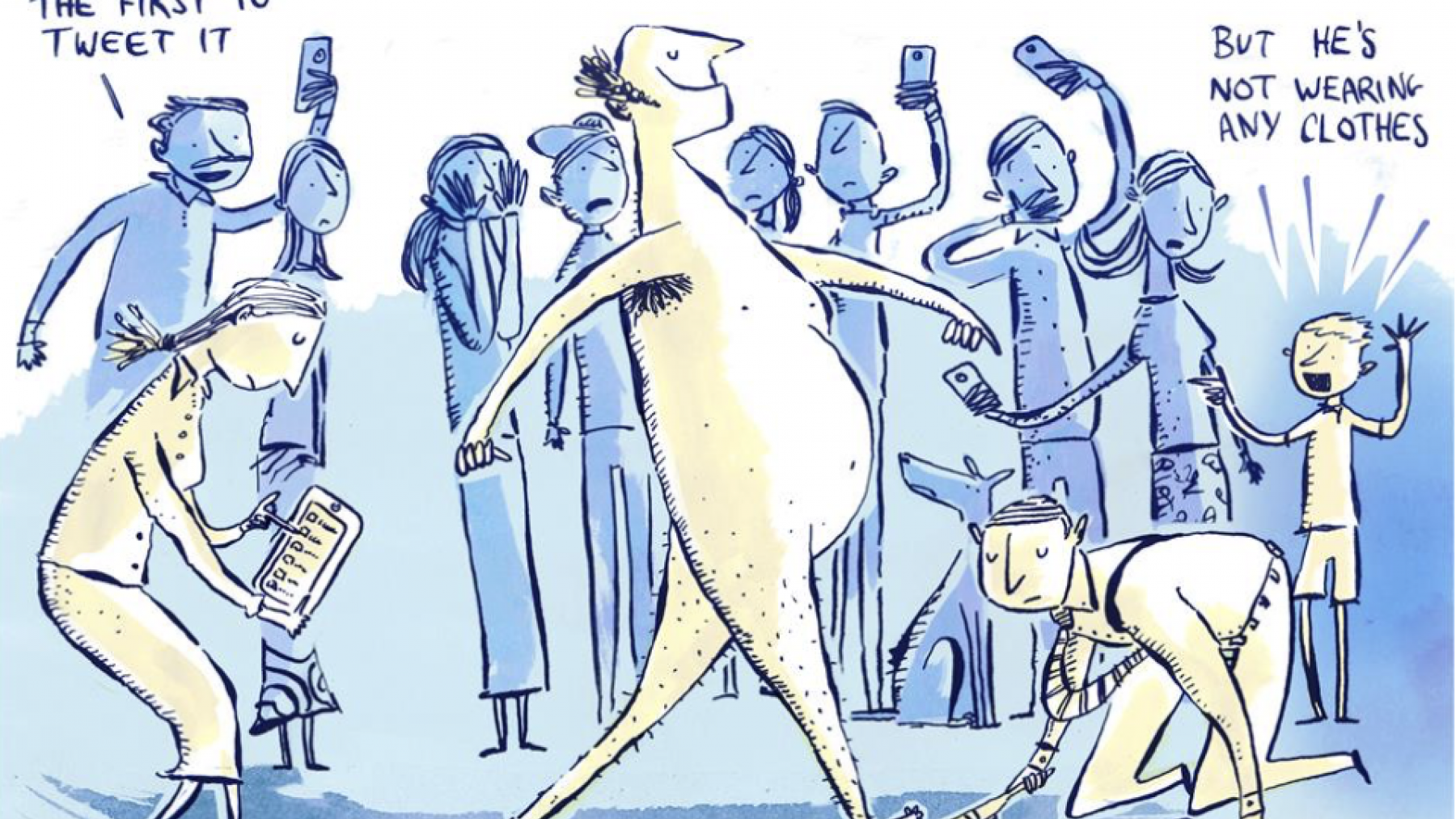HOW TO AVOID PRESENTING NAKED!

Submitted by Jack Milner on March 20, 2023
On the Wednesday morning of the last week of rehearsals, Brook informed his actors they were performing the show that afternoon to an audience of 11 year olds. The audience filed in to watch 3 hours of Hamlet and an elderly director sat at the back of the auditorium and watched the audience. Wherever they looked bored or disinterested he made notes.
The next day all the scenes and moments where the audience had appeared confused or bored, he re-directed. Peter Brook made sure that they were telling the story, that the audience would be gripped throughout. He explained, “Shakespeare is the greatest writer of our time, if it’s directed well then any reasonably bright 11 year old should be gripped from start to finish. If they’re not then the chances are you’ve travelled up your bottom and have forgotten to tell the story and its all become a bit emperor’s new clothes – no one’s actually pointed out the obvious (that you are metaphorically if not actually naked), that it doesn’t make sense.“
The production ended up as perhaps the clearest and most iconic productions of Hamlet in history.
So many presenters have to present what appear to be dry, complex subjects. They understand these subjects intimately, could talk all year about it. They are often senior experts, talking to fellow industry professionals, so what could possibly go wrong?
The answer is, that the presenters are so in love with their subject that they forget to tell a story, they become bound up in their industry jargon and fear that any attempt to simplify will make them appear stupid in front of their peers. Plus because they are the experts and or very senior, no one has the temerity to tell them that their presentation is incomprehensible gobbledegook.
The result is dry, complex presentations in which the audience lose the will to live as the presenter loads yet more information and complexity into their slides to persuade the audience they are an expert.
Overcomplication is one of the biggest of presenting sins. So look through your presentation now and imagine yourself presenting it to a group of 11 year olds. How can you simplify? What do you need to get rid of to explain your story clearly? Which bits would they find boring?
Now you will argue reasonably that your audience is not made up of children. Of course. But if you’re in danger of going up your own bottom and it all becoming a bit “emperor’s new clothes,” then explain it as though talking to a child and see what happens. There’s a balance here but you will find you will keep a surprising amount of the “child version.”
I’ve tried this exercise hundreds of times, and almost every single time the presentation is significantly sharper, punchier, easier to understand and without a hint of nudity.



